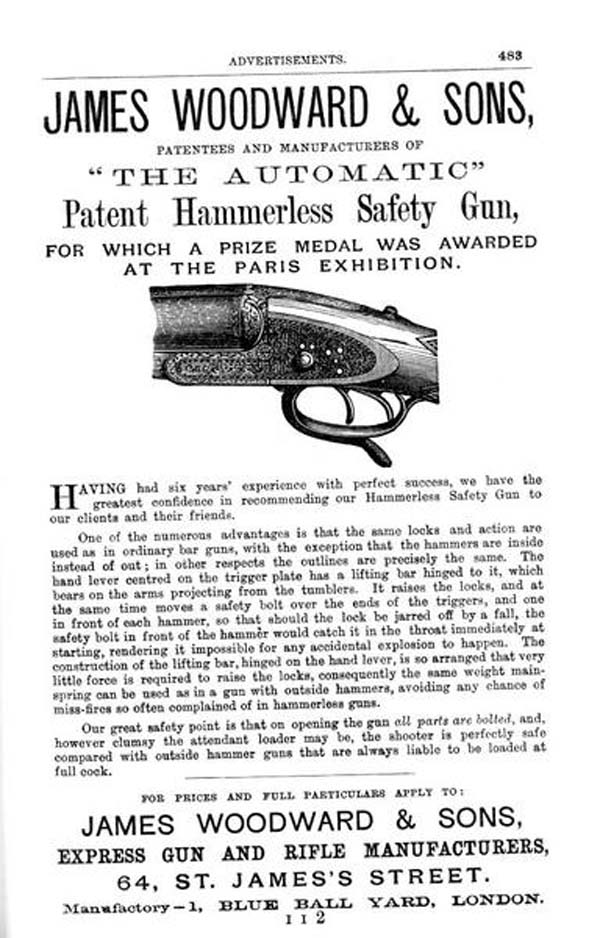
.450/.400 3.25" Magnum Nitro Express Double Rifle
"The Automatic"
Many thanks to WA Roscoe Stephenson for this extraordinary page

Above is a reproduction of an advertisement from "Modern Sportsman's Gun & Rifle" by J.H. Walshe ("Stonehenge") published in 1882, that decribes the attributes of the action. (This scan was graciously provided by "470Rigby," a contributor on NitroExpress.com.)
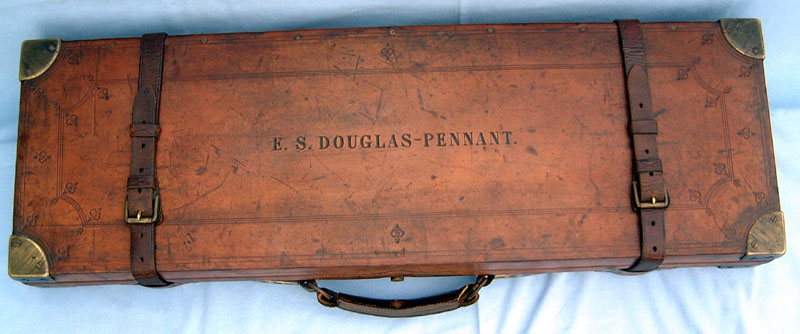
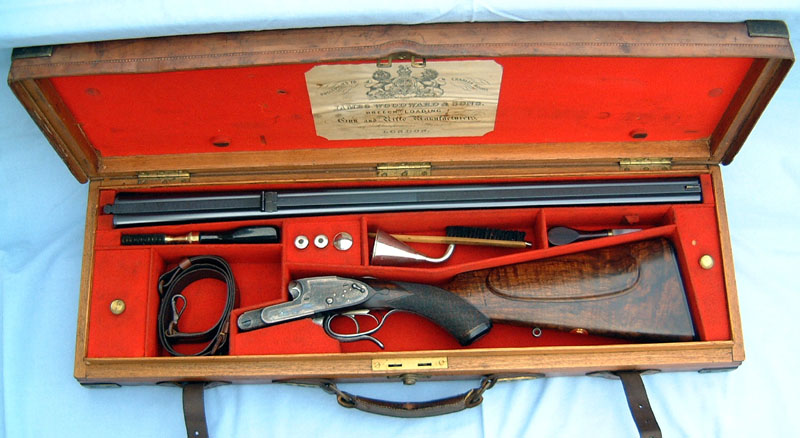
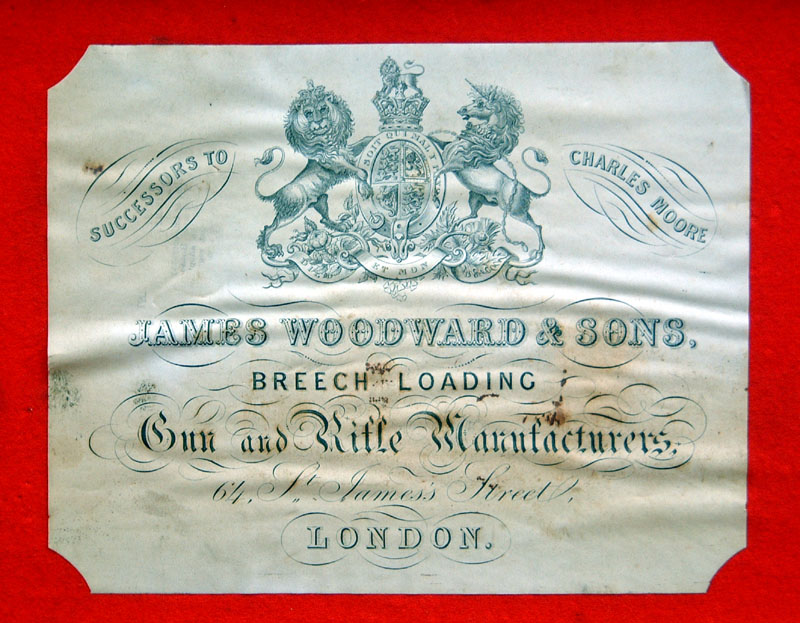
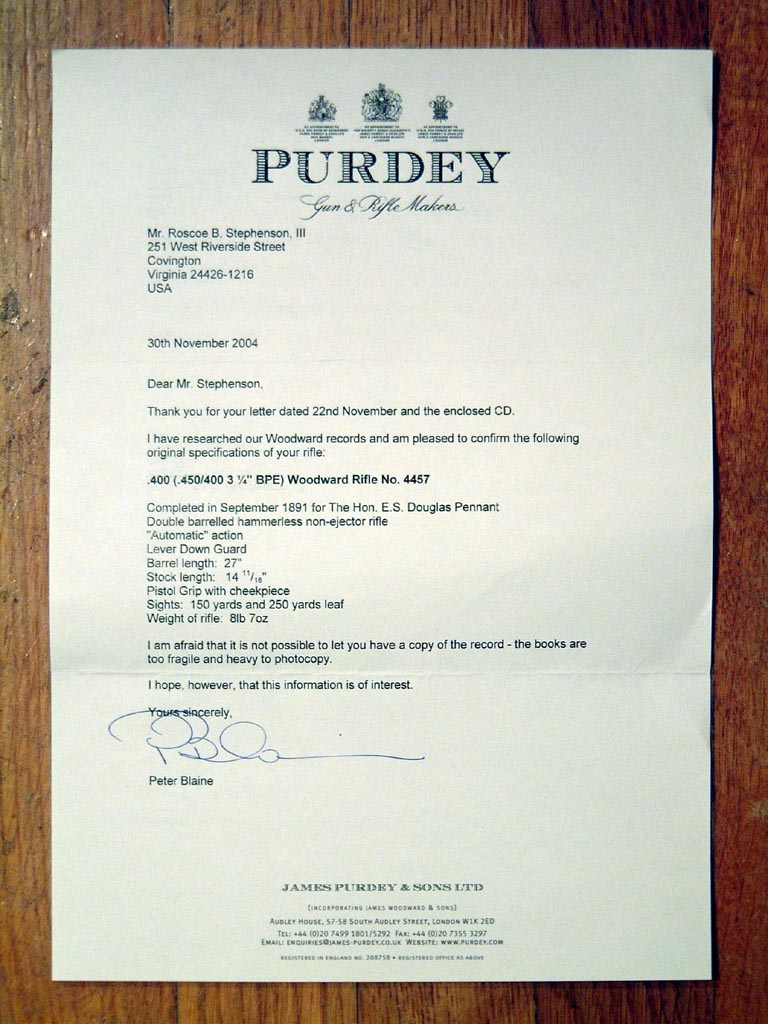
The rifle is a best quality SxS by James Woodward & Son of London, SN 4457, delivered to Honourable E.S. Douglas-Pennant in September, 1891. Born June 10, 1864 in Penrhyn, Caernarvonshire, Wales, Edward Sholto Douglas-Pennant was a scion of the Penrhyn slate dynasty. His father was the Hon. George Sholto Gordon Douglas-Pennant, 2nd Baron Penrhyn of Llandygai, who was to be made famous across the United Kingdom by the great strike of 1900-1903 at Penrhyn Quarry. His mother was Pamela Blanche Rushout. Penrhyn Castle lies near Bangor and Bethesda in north Wales. In 1903 the Honourable E.S. Douglas-Pennant appears on the roster of the Imperial Yeomanry, Buckinghamshire (Royal Bucks Hussars), headquartered at 23 Carlton House Terrace, London S.W. He was Second in Command, with the rank of Major.
In 1906 he was living in Whittlebury, at Sholebroke Lodge.
On March 10, 1907 the Honourable George Sholto Gordon Douglas-Pennant, 2nd Baron Penrhyn of Llandygai died. Thereupon, the Hon. Edward Sholto Douglas-Pennant succeeded to the estate and title, becoming 3rd Baron Penrhyn of Llandygai.
Life in Wales and good fortune for the Penrhyn Dynasty could never be the same. Accounts of the great quarry strike of 1900-1903 depict it as an epic struggle between the traditional owners of capital and the emerging trade unions. Lord Penrhyn (the 2nd Baron Penrhyn) stubbornly refused to deal with the workers’ committees. Bethesda and its environs suffered, as did the Welsh slate industry as a whole. Sickness and hunger plagued the idle workers. The standoff took its measure of Lord Penrhyn’s wealth, too; the quarry being closed three years. Compounding negative events followed: the Great War, the Great Depression, and the Second World War. The overall result was a precipitous decline in production of Welsh slate. Records show that Wales produced 364,000 tons of slate in 1912. By 1958 output was only one-seventh that amount, and it further declined to 22,000 tons by 1970.
The Honourable E.S. Douglas-Pennant died on August 27, 1927 at age 63. His first son, Alan, preceded him in death, tragically killed in action in the Great War. The Penrhyn estate and title descended to his second son, the Honourable Hugh Napier Douglas-Pennant, 4th Baron Penrhyn of Llandygai.
The 4th Baron Penrhyn died June 26, 1949. Perhaps what then occurred is a reflection of the hardships of strikes, wars, and depression. Following his death, in 1952, Penrhyn Castle and a substantial portion of the Penrhyn Estate were ceded to the Treasury in lieu of death taxes, vesting in the National Trust. This history of misfortune may explain why this rifle now has an owner in the United States.
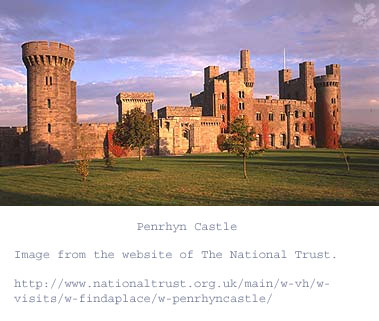
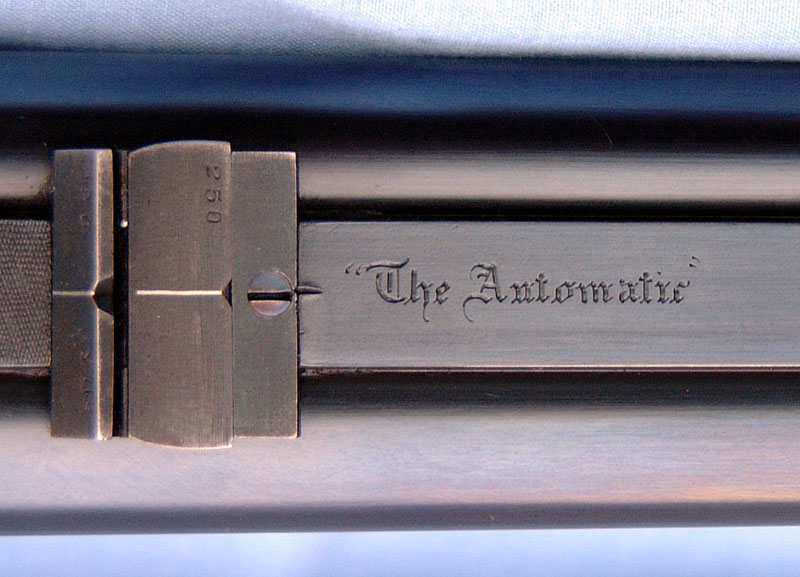

"The Automatic" is a hammerless snap action bar sidelock which operates and cocks by a forward swinging underlever.

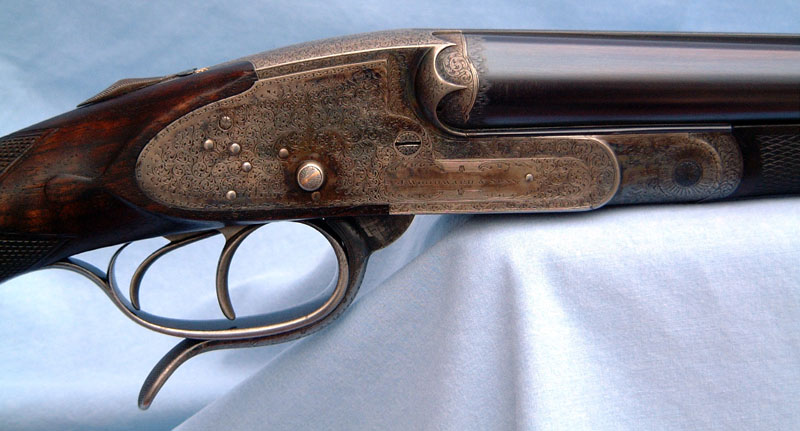
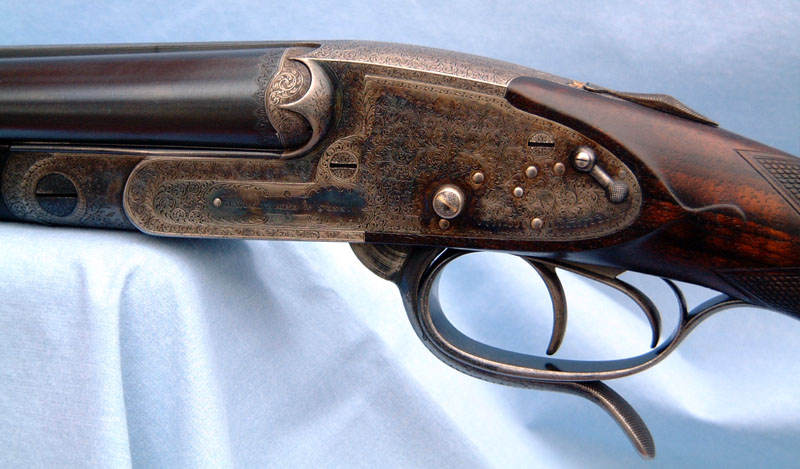

Lockup is accomplished by two Purdey under bolts, a doll's head rib extension, and side clips. Operation of the action is butter smooth, in part because of the roller bearing situated on the front of the Purdey type locking bar. I know of no other double action that incorporates this feature. The roller bearing reduces friction between the Purdey locking bar and the rear surface of the front barrel lump.

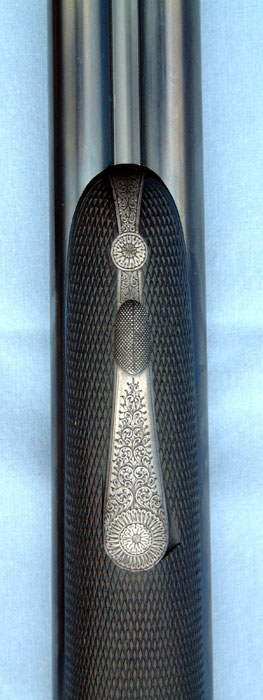
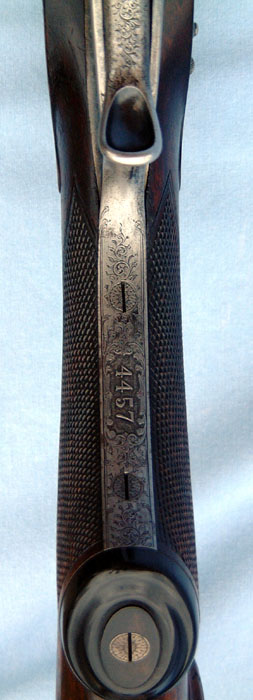
The exterior metal surfaces are adorned with extremely fine English scroll engraving, perfectly executed.
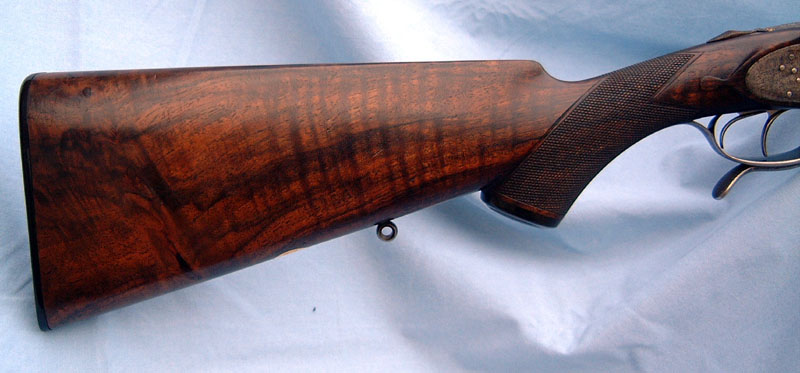
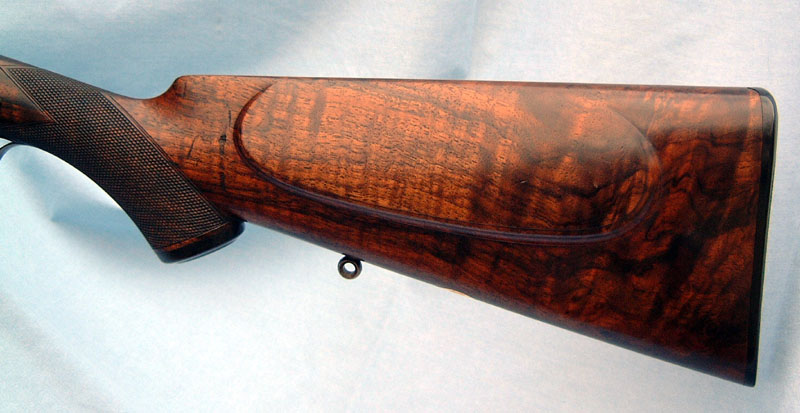
The rifle is wooded with very nicely figured English walnut. Length of pull is 14 11/16". The oval cheekpiece has double shadow lines. The forend and grip are finished with point pattern checkering. The pistol grip is finished with a horn cap; the butt with a checkered horn plate.

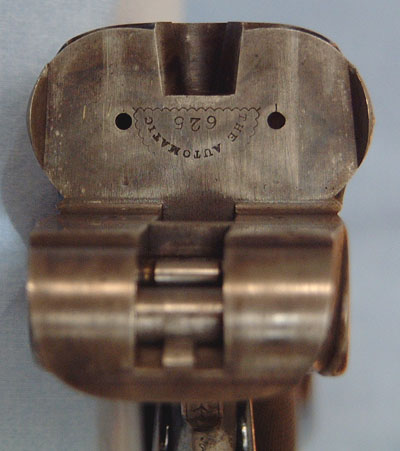
No cocking levers penetrate the action bars. This allows a petite, rounded design, without compromise of strength.
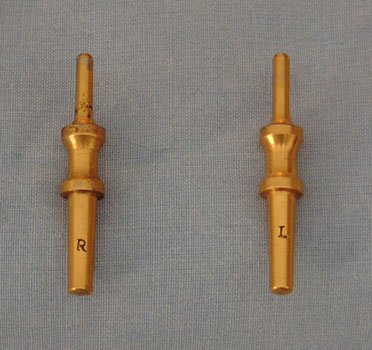
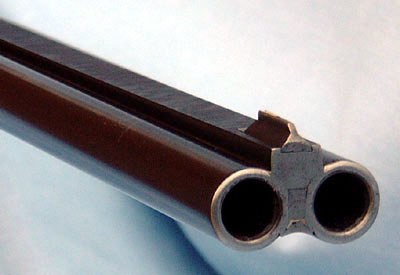
The firing pins, individually fitted, are gold plated. There is an auxiliary set of firing pins and an extra front sight with the accessories in the case. The front sight has a white ivory bead inlaid into a slot (not visible in this photo).
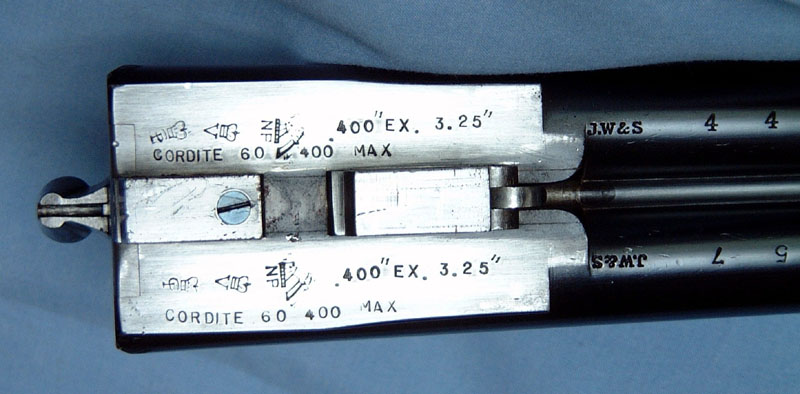
Originally a .450/.400 3.25" BPE, at some time after 1925 the rifle received new nitro barrels from James Woodward & Sons chambered for the full nitro version of the same round. The original barrels are lost to history. The new barrels, signed "JW&S" and numbered to the rifle, are contoured just like the original barrels, as the rifle retains the exact weight of its original configuration. The proof marks on the flats are correct for the 1925 - 1955 period. They do not indicate a re-proof of the BPE barrels.
The 27” barrels are fluid steel. The rifle weighs 8 lbs., 7 oz.
I credit astute interpretation of the proof marks to "400NitroExpress," a contributor on NitroExpress.com. His kind guidance sent me on the path to more fully understand the secrets revealed by the cryptic marks we find on vintage guns.
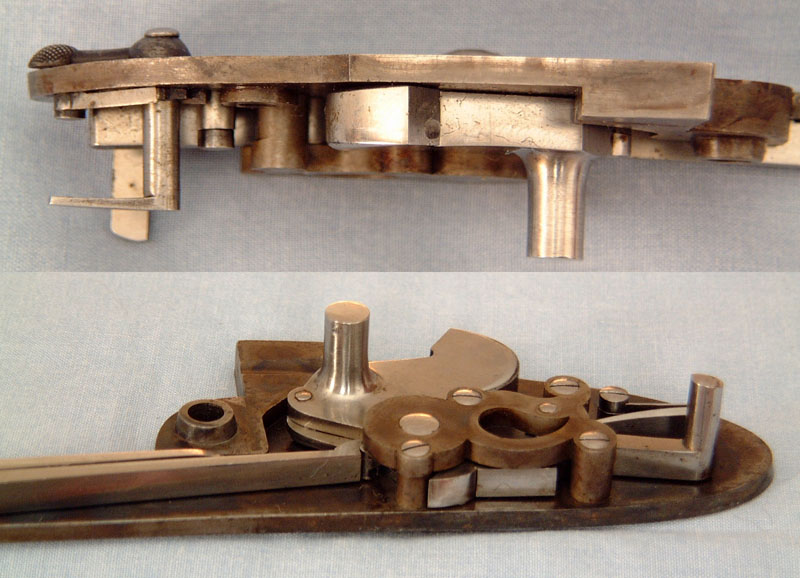
The two photos above and the three below show how the action is cocked and also demonstrate its safety features.
There is a cylindrical lug on the side of each tumbler. As the underlever is articulated forward, its head pushes upward against these lugs in the forward cut-through in the head of the stock. This motion causes the tumblers to pivot in an arc until the sears engage and the action is
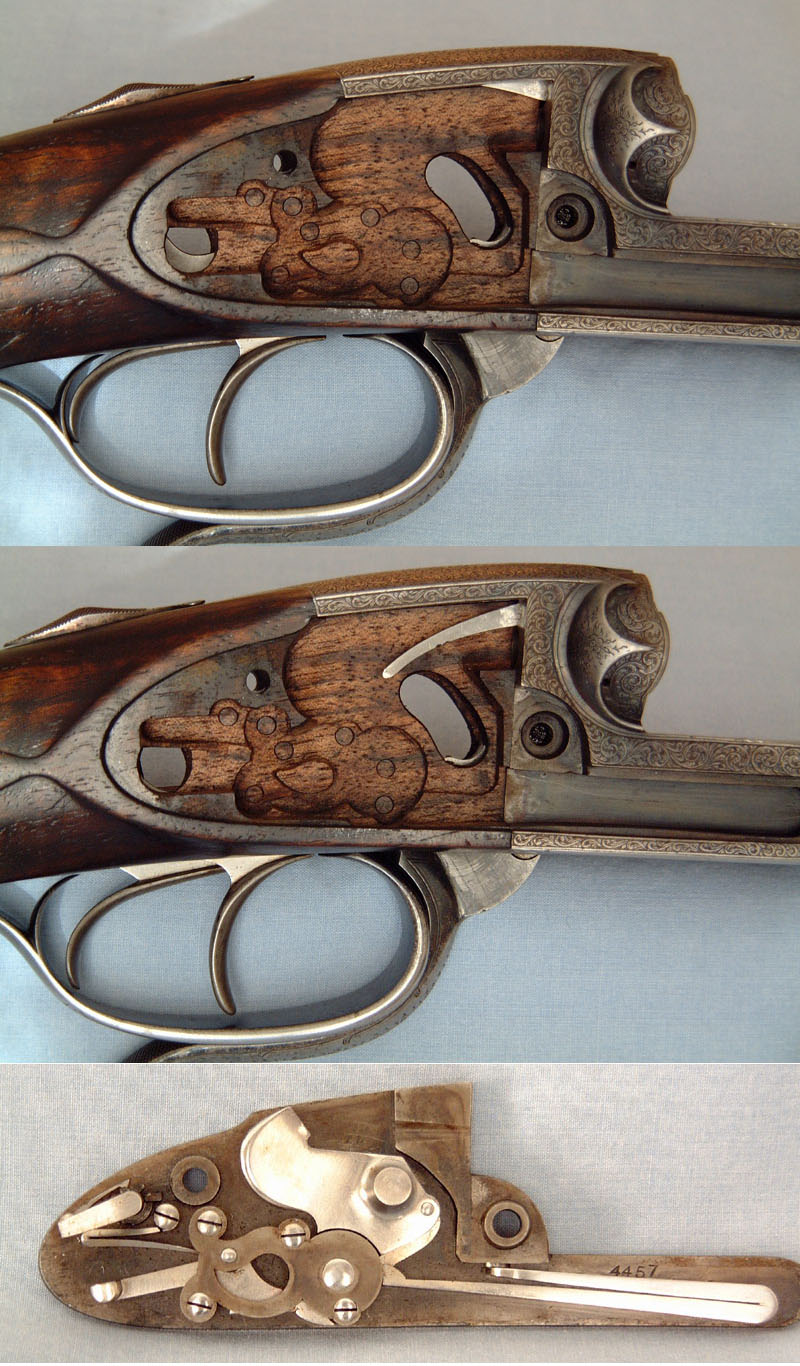
At the same time the action is cocked, the automatic safety engages. As stated in the advertisement, this movement causes a safety bolt to block the ends of the triggers. Meanwhile, separate safety bolts hinge down from the top of the receiver to positively block the nose of each tumbler. In the three photos above you first see the position of this tumbler safety bar with the safety button on "Fire." The second photo shows how the safety bar swings down in front of the tumbler when the safety button is moved to the "Safe" position. In the third photo it is easy to see the notch just below the nose of the tumbler which catches on this safety bar in the event of an accidental disengagement of the sear.
Intercepting safety sears are unnecessary in this system.
When reading the advertisement, it is easy to sense the concern of the shooting public. Shooters of the day were accustomed to external hammers which are only drawn to full-cock when the shooter is ready to take aim and fire. The new "hammerless" action always remains at full cock. Thus the advertisement eases the concern of the shooter by explaining the unique safety features of this design.
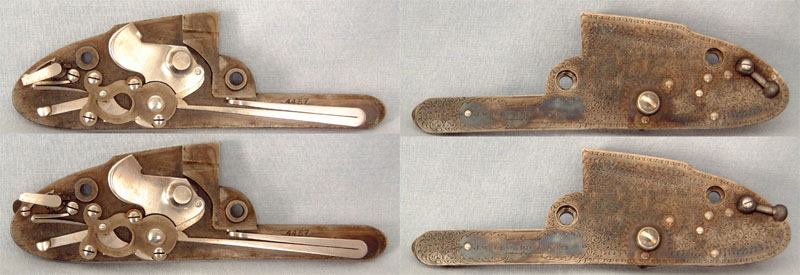
The rifle has a "bolted" safety, which operates by the small lever on the rear of the left lock. With the lever down it is in the unbolted position. When turned up, it is in the bolted position. This composite photograph shows the articulation of the safety bolt, both from the outside and from the inside of the lock.

Finish all around is original, both wood and metal. The bores are nearly perfect condition. The rifle has seen very little use and remains in exemplary condition. It's a beautiful time capsule to the Edwardian era.